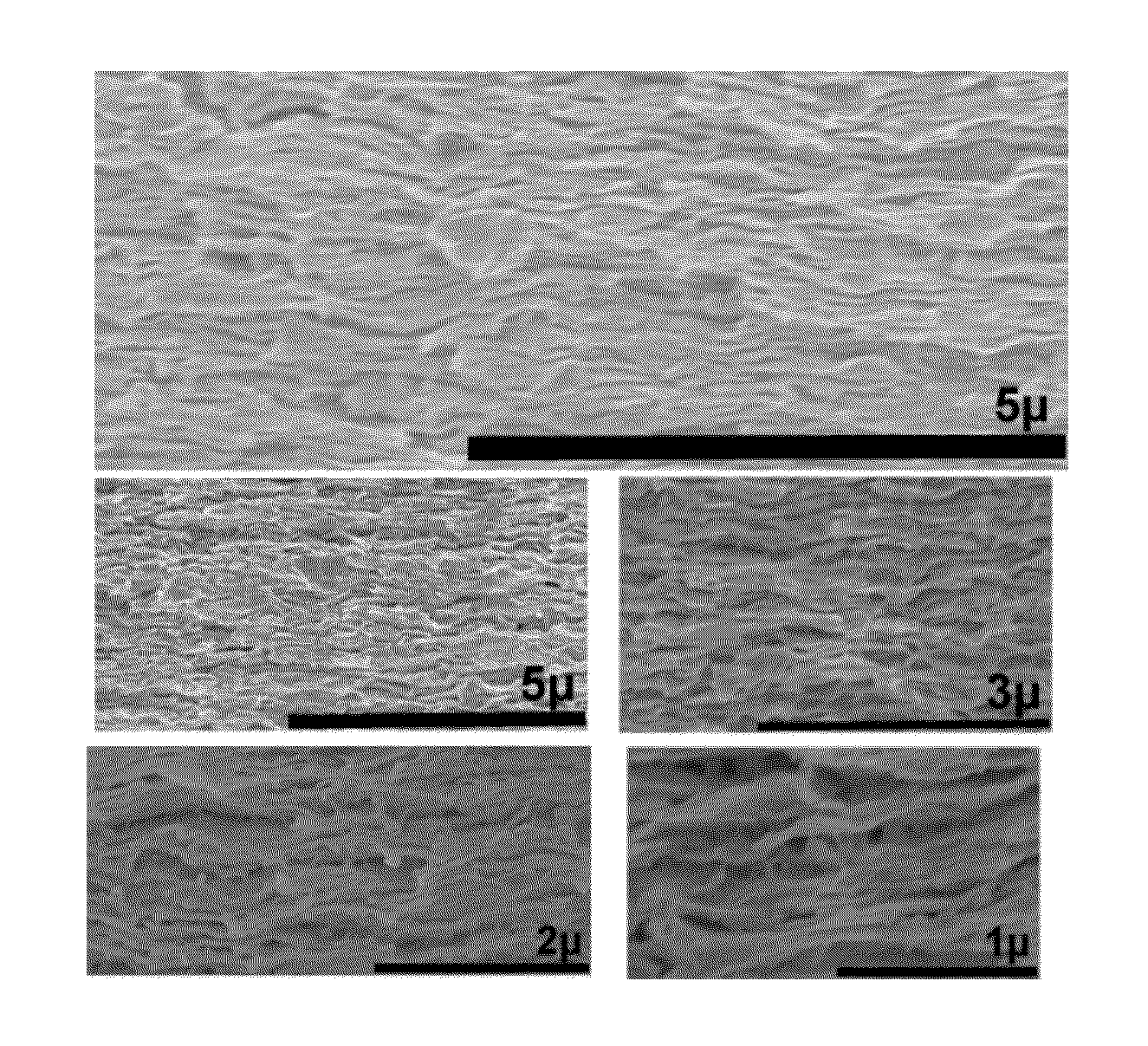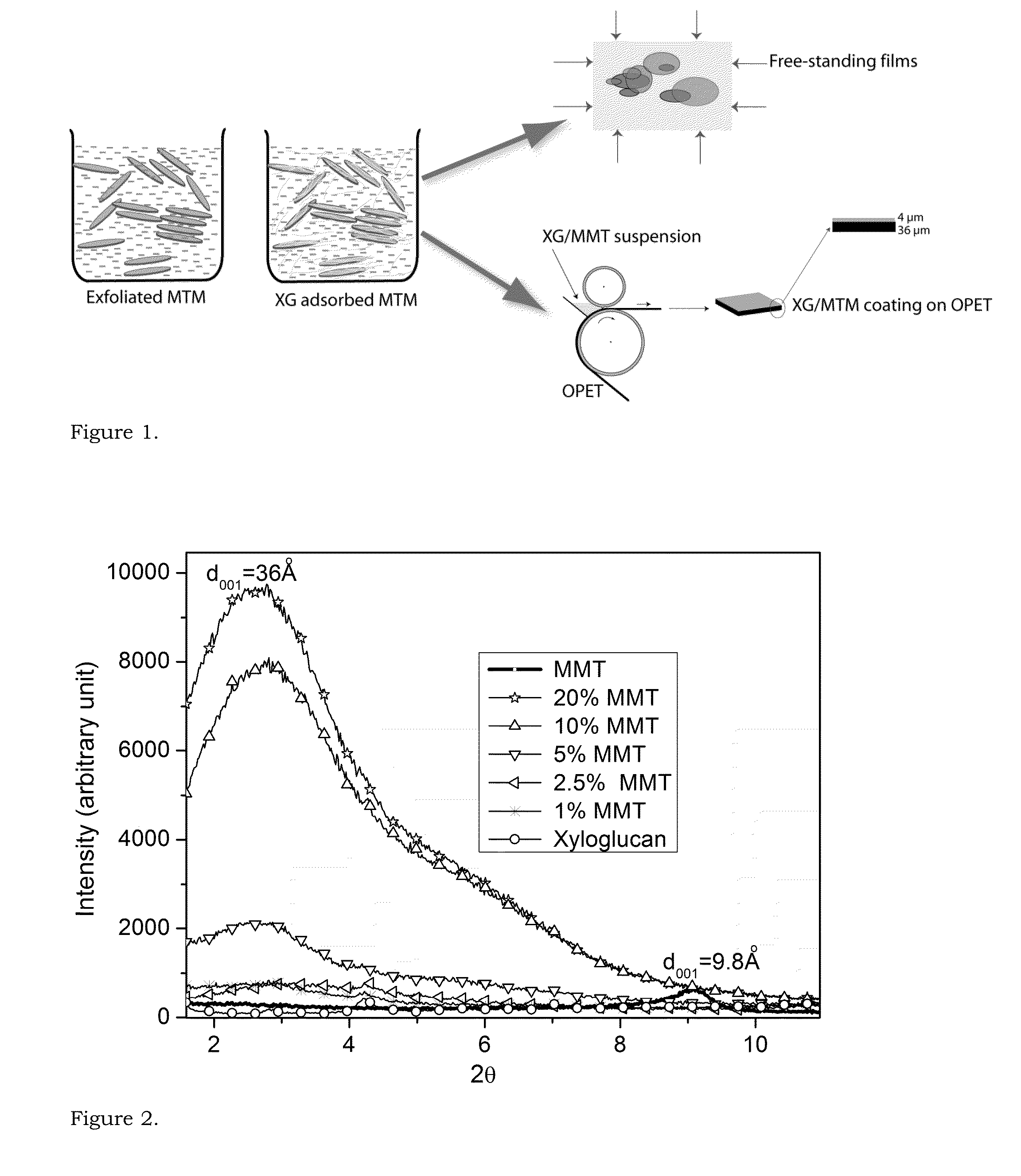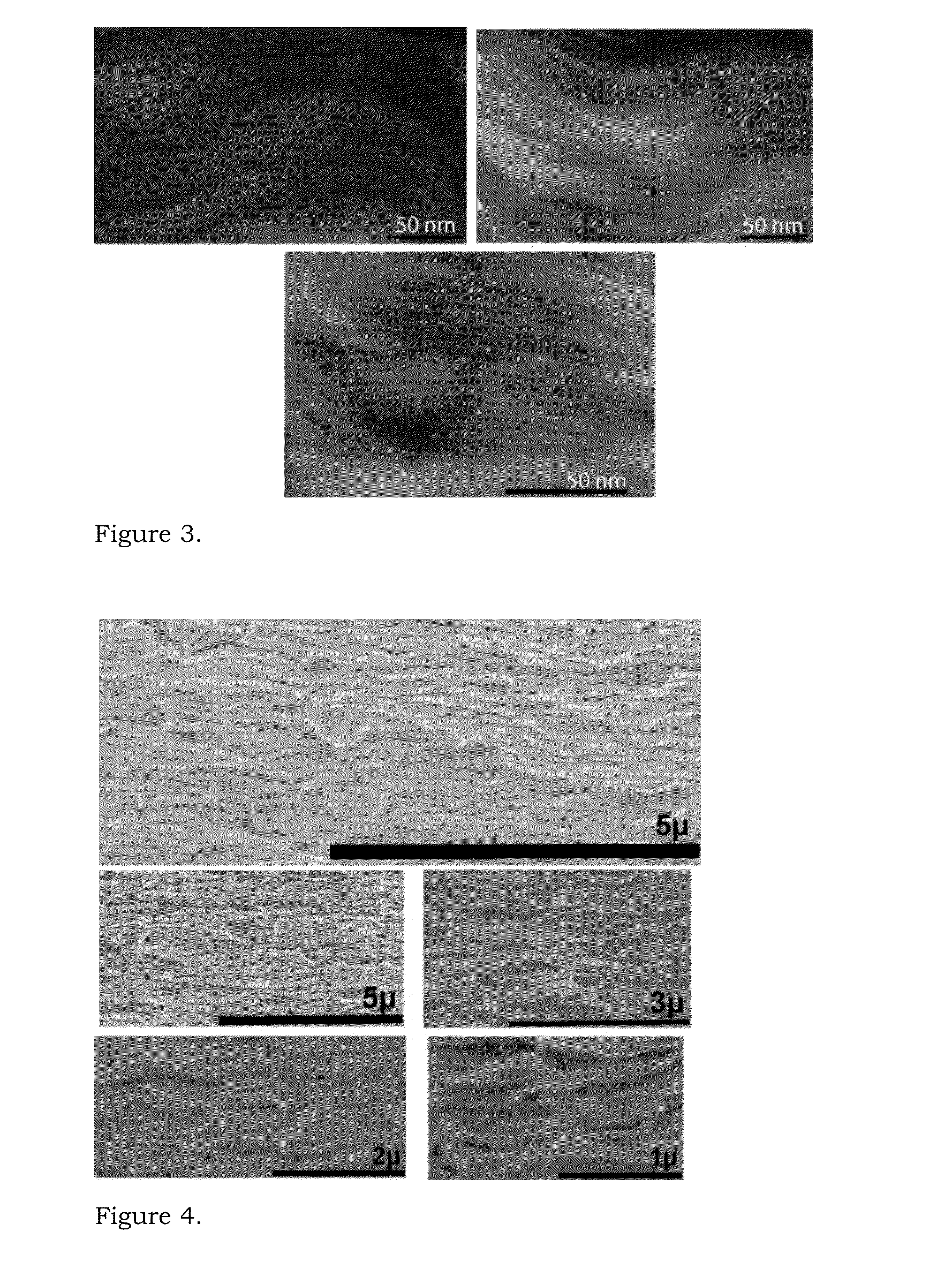Oxygen barrier for packaging applications
a technology for packaging applications and oxygen, applied in the direction of hemicellulose coatings, thin material processing, natural mineral layered products, etc., can solve the problems of food deterioration, inability to achieve balance, and disadvantages of opacity and non-renewability
- Summary
- Abstract
- Description
- Claims
- Application Information
AI Technical Summary
Benefits of technology
Problems solved by technology
Method used
Image
Examples
examples
Materials and Methods
[0081]Preparation of xyloglucan-MMT (XG / MMT) nanocomposite films: 1% MMT (Cloisite Na+, density of 2.86 g / cc, Southern Clay Products, Inc.) solution was prepared by using Ultra Turrax mixer (IKA, DI25 Basic) at 25000 rpm for 15 min followed by sonication using Vibra-Cell (Sonics & Materials, Inc.) ultrasonic processor at 37% amplitude at ambient temperature. It was repeated several times and the resultant solution was kept undisturbed for three days and any clay aggregates were removed. The industrially available xyloglucan (weight average molecular mass, 2.5 MDa, lnnovassynth technologies Ltd., India) was purified by centrifugation (4000 rpm for 45 min.) and freeze dried to obtain pure xyloglucan. Clay dispersions of 1.0, 2.0, 5.0, 10.0, and 20.0% (wt / wt) were added to the corresponding XG solutions and mixed with Ultra thorax at 13500 rpm for 15 min. and kept under magnetic stirring overnight. The resulting solution was centrifuged at 4000 rpm for 20 min. to r...
PUM
| Property | Measurement | Unit |
|---|---|---|
| tensile strength | aaaaa | aaaaa |
| tensile strength | aaaaa | aaaaa |
| RH | aaaaa | aaaaa |
Abstract
Description
Claims
Application Information
 Login to View More
Login to View More - R&D
- Intellectual Property
- Life Sciences
- Materials
- Tech Scout
- Unparalleled Data Quality
- Higher Quality Content
- 60% Fewer Hallucinations
Browse by: Latest US Patents, China's latest patents, Technical Efficacy Thesaurus, Application Domain, Technology Topic, Popular Technical Reports.
© 2025 PatSnap. All rights reserved.Legal|Privacy policy|Modern Slavery Act Transparency Statement|Sitemap|About US| Contact US: help@patsnap.com



